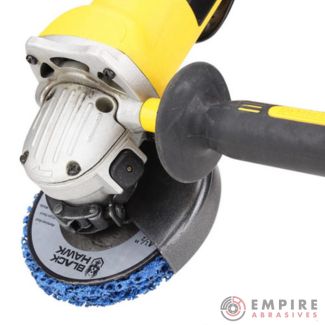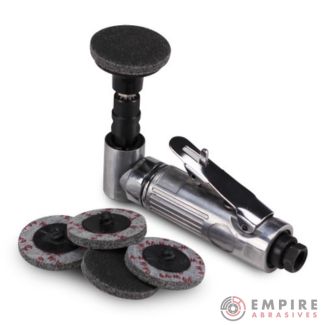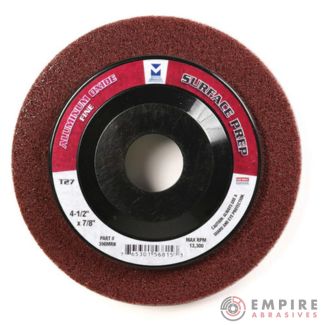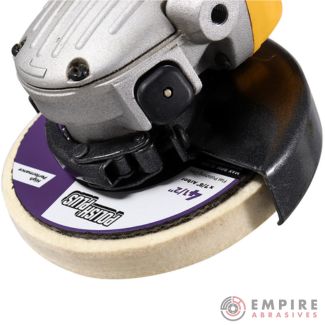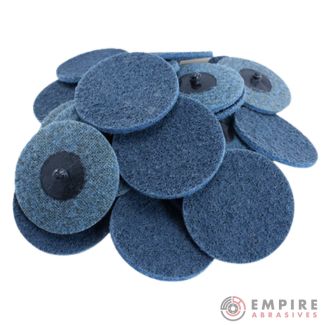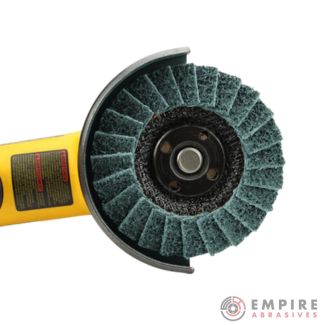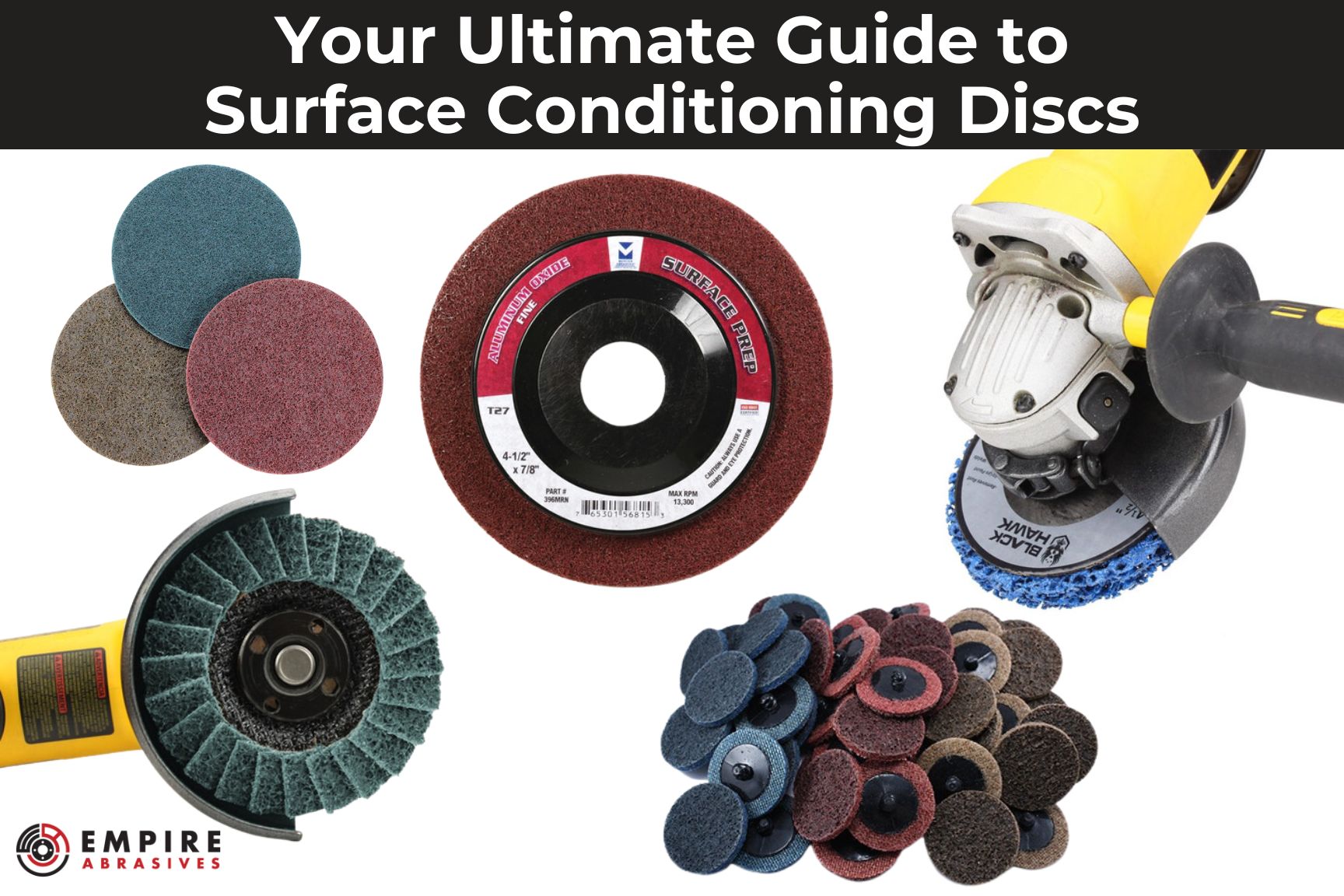
If you’ve ever needed to deep clean a surface or prepare it for overlay, you’ve likely used (or could have used) a surface conditioning disc.
Surface conditioning discs are non-woven abrasives, made of open nylon webbed discs. They are typically helpful in removing surface materials on surfaces such as metal, ceramics, plastic, or glass. They allow you to prepare a surface for finishing, deburring, leveling, or blending. These discs have many diverse uses in addition to this.
Surface conditioning products use non-woven polymers with nylon backing to smooth surfaces and produce a uniform finish without eliminating or damaging the underlying material’s surface.
If you’ve wondered what surface discs are used for, this guide is for you. Also, you will get to learn the different types of surface conditioning discs, their advantages, some tips for best use, and how to choose the right discs.
What Are Surface Conditioning Discs Used For?
Below are some of the many unique uses for surface conditioning discs.
Deburring
When metal workers need to prepare a surface, they typically use surface conditioning discs.
After the machine cuts a plate or part, manufacturers will manually smooth the rough edges of the object and remove any imperfections using these discs.
Burrs, or imperfections, can occur through any number of factors, including:
- Casting
- Molding
- Grinding or milling
- Laser cutting and plasma cutting
- Stamping
- Fine blanking
To use surface conditioning discs for deburring a metal surface, simply scrape or cuff the burrs using non-woven abrasives to remove any impurities and prepare the metal for the next step of the manufacturing process.
Surface Preparation
When applying coating to a substrate paint, coating, or lining, you must first prepare the surface for application.
To do so, many manufacturers manually remove loose materials from the substrate using products like surface conditioning discs or scotch brite/scuff pads.
These discs and pads are preferred for surface preparation since they do not damage the substrate or raise the material's surface energy.
Polishing
When workers prepare wood or metal for the next step of the construction process, they must polish and cleanse those surfaces first.
For this purpose, many professionals use surface conditioning discs with buffing and polishing products. The discs work by removing adhesions to the substrate surface and smoothing out rough edges. They also contribute to adding shine, creating a luminous quality to the material underneath.
Sealant Adhesive
Surface conditioning discs can also prepare a surface for sealing adhesion. To fill two covers together, you must have a smooth, flat surface that is clear of impurities. To achieve this effect, you can use a surface conditioning disc before applying the adhesive.
Corrosion Removal
Surface conditioning discs are standard in metallurgy, often used to remove corrosion from metal surfaces.
The discs work by seamlessly scrubbing the rust from the surface, allowing the metal underneath to regain its natural shine.
For deep rust, our wire wheels are a perfect solution instead.
Advantages of Using Surface Conditioning Discs
Surface conditioning discs are multi-use tools that boast many distinct advantages.
Versatility
Many professionals use surface conditioning discs to prepare a surface for finishing, to remove corrosion, and prepare for sealant adhesion.
Additionally, surface conditioning discs are a popular method of polishing and cleansing surfaces.
With so many uses, surface conditioning discs are a must-have in the arsenal of any metalworker, construction worker, or manufacturing professional.
Efficiency
Surface conditioning discs are highly effective and efficient. They allow for the rapid removal of unwanted materials and smooth surfaces more quickly and efficiently than other methods.
For this reason, they are the preferred tool in manufacturing since they allow for smooth operations without disruption.
Minimal Damage
Of all the surface preparation methods, surface conditioning discs are the least invasive. They rely on non-woven abrasives to remove impurities and level surfaces, and they generate little surface energy and heat. As a result, surface conditioning discs are often the preferred method of manufacturers since they are unlikely to damage the surface condition.
Effectiveness
If you’ve ever prepared a surface before, you know how difficult it can be to get it right. Thankfully, surface conditioning discs are highly reliable devices that accomplish your objectives quickly. They allow for removing impurities and smoothing surfaces without you having to spend too much time and energy. They are a valuable investment because of their effectiveness.
Ease of Use
Surface conditioning discs come in many shapes and sizes, but they all have one thing in common; they are easy to use.
With hand pads, surface conditioning belts, and surface conditioning wheels available, you can use any type of device to prepare your surface for finishing.
They are intuitive and comfortable on the hands, without requiring invasive chemicals.
Affordability
Surface conditioning discs are also highly affordable, making them the preferred tool of manufacturers on a budget.
You can purchase a pack of 25 2” surface conditioning discs for under $25. Since they are adaptive to most uses and highly affordable, they offer excellent value for your investment.
Different Types of Surface Conditioning Discs
These discs come in different types, including;
Easy Strip and Clean Discs
Easy strip and clean discs are typically used to prepare a surface for painting or lamination. They are also helpful in cleaning up weld lines.
The 4” and 4.5” discs attach to angle grinders and the 3” and 2” quick change strip discs fit a die grinder. They all work without additional material loss. They are made of non-woven nylon webbing adhered to fiberglass, keeping them robust and easy to use. Uses for easy strip discs include:
- Paint removal
- Glue removal
- Weld Line cleaning
- Surface preparation for cars
- Removal of surface slag
- Removal of corrosion and scaling
Unitized Discs
Unitized discs provide multiple layers of non-woven abrasive materials that are compressed and impregnated with resin. They are then bonded to a fiberglass backing disc to maintain integrity and prevent damage.
These discs pair with die grinders, drills, and air grinders, allowing for polishing, buffing, and finishing.
Surface Preparation Discs
Surface prep discs are made of non-woven abrasives and synthetic fibers. They are typically used on metals or other surfaces for blending, finishing, polishing, and cleaning.
You can also leverage surface preparation wheels. These types of discs are commonly paired with angle grinders, though smaller quick change versions are now made that fit die grinders for more targeted jobs.
Felt Polishing Discs
Felt polishing discs are typically used in the final stage of the preparation process. Not technically a "surface preparation disc", polishing is a part of surface finishing, so they get a special mention.
These types of discs are often made with wool, and they can polish contoured surfaces with a gentle abrasive to prevent material shedding or discoloration. They are usually used with buffing compound bars.
Felt polishing discs are highly versatile, and they work well on the following:
- Plastics
- Steel
- Stainless steel
- Aluminum
- Stone
- Glass
Quick Change Surface Conditioning Discs
Quick change surface conditioning discs are 2" or 3" surface conditioning discs that attach to a die grinder with a Roloc attachment. They are ideal for smaller projects and those requiring more detailed work. They are typically used on stainless steel or alloyed steel, non-ferrous metals, plastic, and fiberglass to provide a uniform, rounded finish.
Surface Conditioning Flap Discs
Surface conditioning flap discs are made of overlapping pieces of nylon webbing impregnated with aluminum oxide grains. They feature an overlapping flap pattern to allow for blending, cleaning, and deburring.
Flap discs typically have a longer shelf life than other types since they are highly robust and provide a more consistent finish. They can be used on angle grinders and do not require backing pads.
How To Choose the Right Surface Conditioning Disc
When deciding which type of disc to choose, it’s essential to consider several factors.
Consider Material
The first consideration to remember is the type of material you are working with. For example, if you plan to use your disc on plastic, a hook and loop surface conditioning disc makes more sense than a unitized disc.
Type of Operation
Surface conditioning discs have many uses, from deburring to polishing. For this reason, different types of discs have specific purposes. For instance, if you are deburring a metal, you would use a surface conditioning flap disc, and to polish a material, you would use a felt disc.
Desired Outcome
You could use a basic surface conditioning disc if you only need to remove impurities from a substrate. However, if you aim to smooth rough edges and don’t require a perfect finish, you can use a flap disc.
Each type of disc produces a slightly variable result, so it’s essential to know your desired outcome before you decide on the right type.
Pick the Right Color Disc
Most surface conditioning products come in several different colors. These colors distinguish the coarseness of the disc, similar to the grit numbers on sandpaper. Sometimes you’ll need multiple colors (coarseness) to get the job done, while other times you might just need a disc with a fine coarseness.
Make sure to read the product descriptions when shopping for these types of abrasives. The colors at one company may mean different things to another company. For example, a red surface conditioning disc at Empire Abrasives is the medium coarseness, while at another brand it may be their fine version.
Tips for Using Surface Conditioning Discs
Now that you know their uses, types, and advantages of using them, let us discuss the tips for using them.
Choose the Right Disc for the Job
With so many types of conditioning discs, choosing the right one for the job is essential. Using the wrong disc can damage surfaces or fail to accomplish the objective you set out to do.
Check the Condition of the Disc Regularly
The disc should retain its structural integrity over time. Once it’s reached the end of its shelf life, you will notice fraying and color changes. Check the disc regularly to ensure that it still works.
Apply Light Pressure
Surface conditioning discs are highly effective with minimal pressure. Avoid putting too much pressure on your discs to make them last longer.
Avoid Overuse
Overusing your surface conditioning discs can compromise their integrity and lead them to degrade faster. You must refrain from overusing your discs to make them last many years.
Store the Discs Properly
Surface conditioning discs should be stored properly to avoid overheating. Store them at temperatures under 60 degrees Celsius (150 degrees Fahrenheit). It will help to avoid melting and damage. Also, you must limit the discs’ exposure to water and humidity.
Wrapping it up
Surface conditioning discs can make a world of difference in your work. Ready to take your projects to the next level? Shop our extensive collection of discs now. If you still have questions, feel free to contact our abrasive products experts. Were just a phone call, email, or online chat away.

